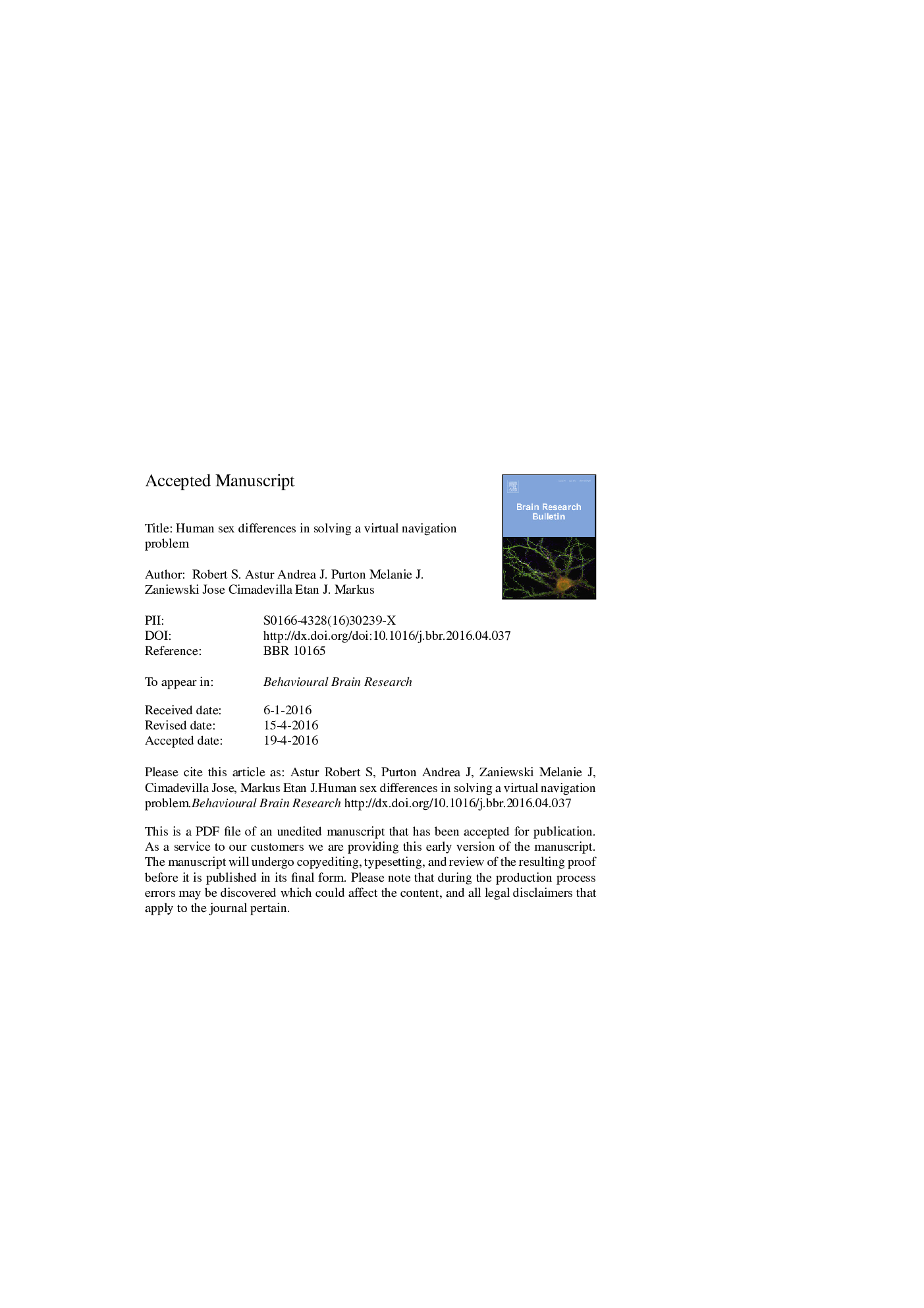| Article ID | Journal | Published Year | Pages | File Type |
|---|---|---|---|---|
| 6256051 | Behavioural Brain Research | 2016 | 28 Pages |
Abstract
The current study examined sex differences in initial and subsequent strategies in solving a navigational problem within a virtual reality environment. We tested 163 undergraduates on a virtual T-maze task that included probe trials designed to assess whether participants were responding using either a place or response strategy. Participants were also tested on a mental rotation task and memory of the details of the virtual room. There were no differences between the sexes in copying or recalling a map of the room or on first trial performance of the T-maze. However, at trial two, males show a significant advantage in solving the task, and approximately 80% of the males adopt a place strategy to solve the T-maze whereas females at that point showed no strategy preference. Across all testing, both males and females preferentially used a place strategy. We discuss how factors such as spatial priming affect strategy preferences and how such factors may differentially affect males and females.
Keywords
Related Topics
Life Sciences
Neuroscience
Behavioral Neuroscience
Authors
Robert S. Astur, Andrea J. Purton, Melanie J. Zaniewski, Jose Cimadevilla, Etan J. Markus,
